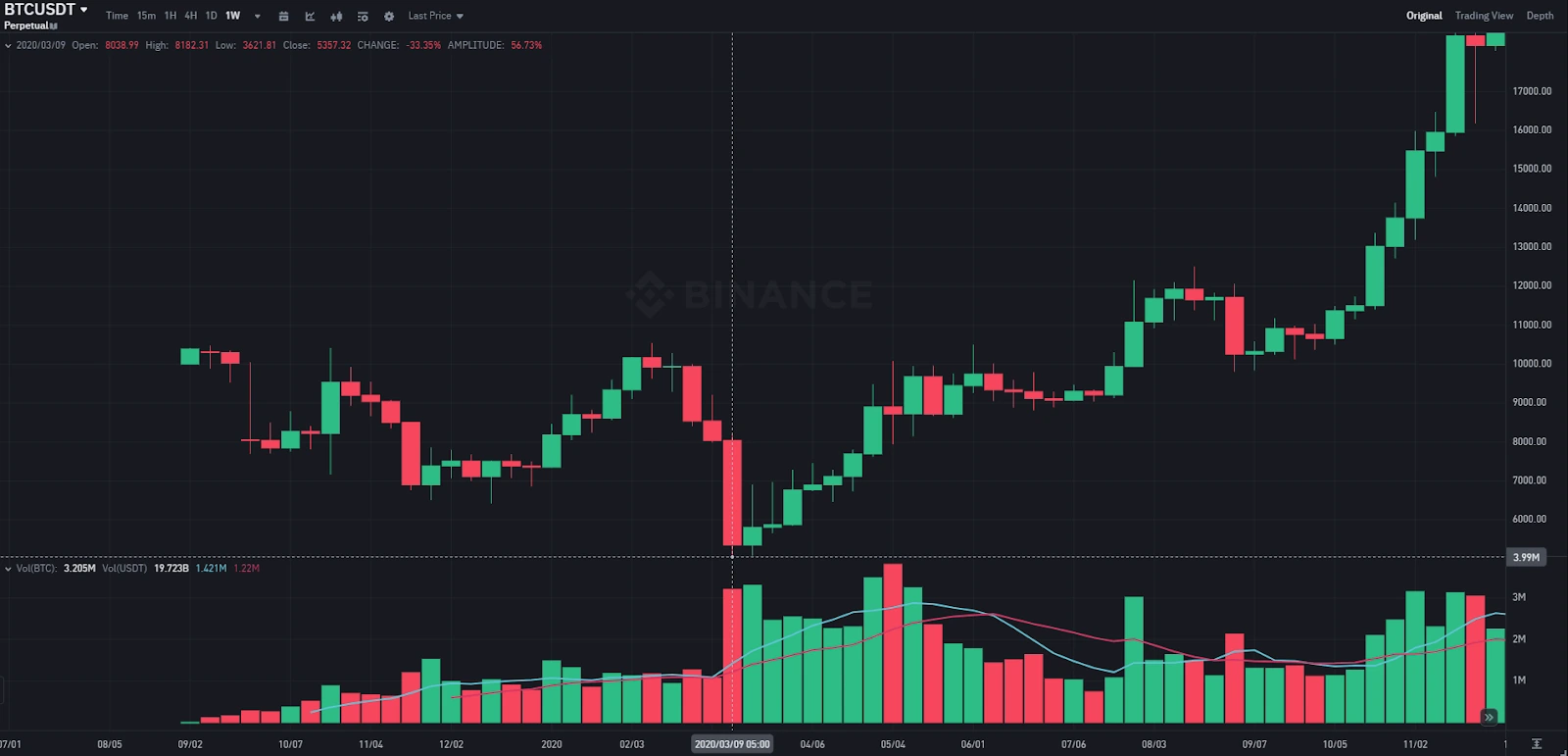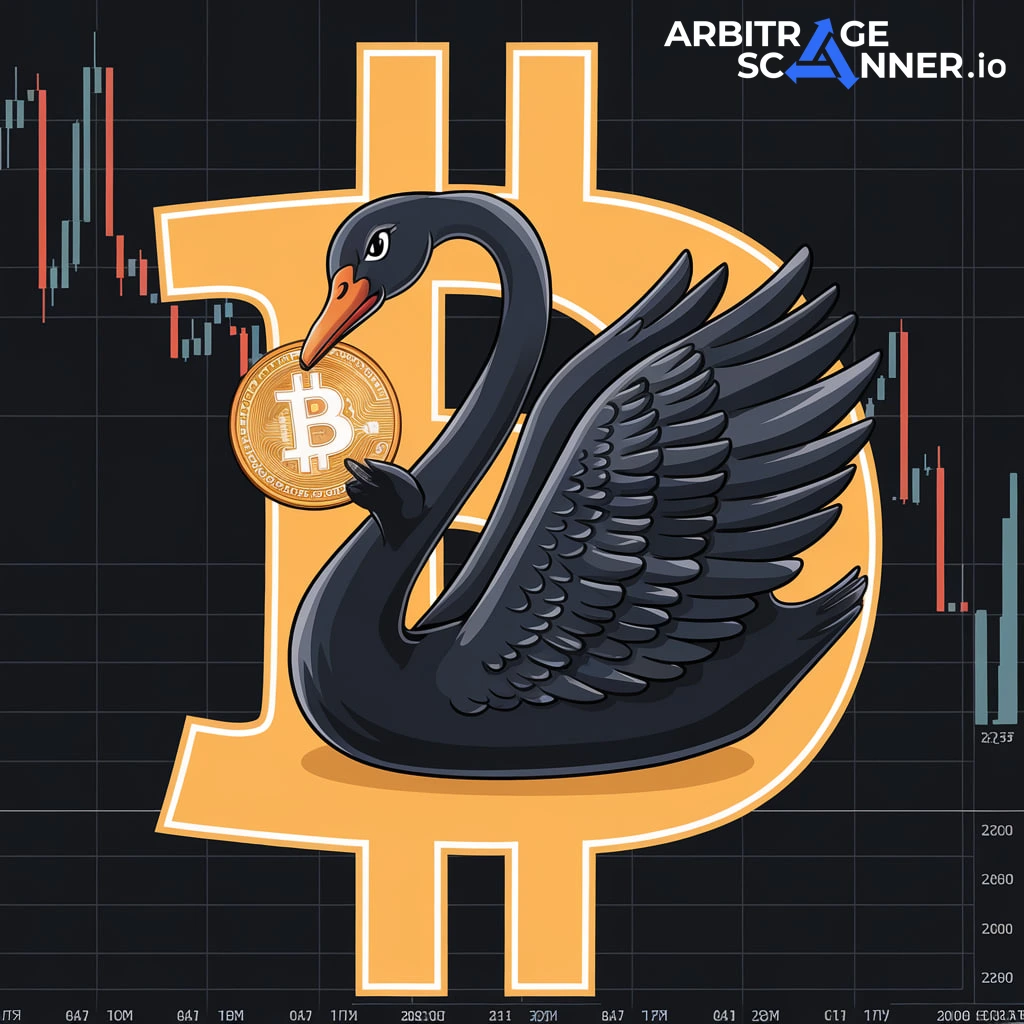Bitcoin's Black Swan: Market Impact and Recovery

“Bitcoin's Black Swan: Impact in the market and recovery
The COVID-19 pandemic started as a black swan event for the global financial markets, including the cryptocurrency market. Thus, as well as such a fact happening to the world for the first time, in this case it was not obvious how to respond correctly. The only sensible solution was to activate the printing press for the purpose of any of the states, which was also done. In the period from 2020 to 2022 the USA printed more dollars than in the last 40 years of the country's existence.
This example was followed by other countries, although not on such a scale. The printed money served to help the economy, as well as the world economy, as well as the individual country. Many expected that the infusion into the economy would give the opportunity not to sink investment assets, but in the first year this did not work out. Cryptocurrencies are a dangerous type of investment, so the first place where traders started to withdraw their funds from was the crypto market.

After a few years it is possible to restore the actions and to understand what was done together with financial trading and also bitcoin in particular, as well as how the actions of the governments of different states influenced this and also what consequences I have in 2025.
What are the Black Swan events?
The term “Black Swan” was coined by Nassim Taleb to describe unique and unexpected events that have significant consequences for the economy and society. Such events are difficult to predict and have a significant impact on financial markets, initiating sharp fluctuations in value and changing investment strategies.
Market crash due to COVID-19
The COVID-19 pandemic began to catalyze a worldwide economic downturn that affected all sectors of the economy, including the cryptocurrency market. Bitcoin, which was previously regarded by certain investors as “digital gold” as well as a way to hedge risks, did not escape the impact of the pandemic.
On the other hand, the epidemic is the basis of an irreparable procedure for bitcoin - it began to be assimilated as a deflationary asset. If you look at bitcoin today, in this case, in the bulk of cases, someone is much better able to withstand any disturbances in the market, compared to altcoins or stocks. Obviously, bitcoin is not comparable to certain cash, bonds or alloys, but if in this case it was the most volatile asset, it is already an achievement.
Chronology of events
At the beginning of 2020, with the spread of COVID-19, the world markets began to feel pressure. On March 12, 2020, the day WHO declared COVID-19 a pandemic, bitcoin experienced a sudden drop in value, falling 37% in a matter of days: from $8,193 to $3,621.

This was a kind of “chip” of bitcoin in these years: as soon as something unforeseen happened in the market, someone instantly lost tens of percent in value, but not a single one depreciated.
Analyzing price movements
Bitcoin's fall at the announcement of the pandemic was very impressive, but definitely not the same as its further growth. It took digital gold until the end of 2020 to reach the $17,800 mark. Interestingly, bitcoin recovered at that time and also showed great growth, if you compare it with classic assets.
It was at that time that they began to declare about the deflationary nature of bitcoin: at least someone and also lost in price more percent than the classic assets, but also recovered and also outgrew the previous figures bitcoin faster.
Correlation of the market with traditional assets
Before the pandemic, bitcoin showed a low correlation with classic economic assets, such as promotions and gold. But during the COVID-19 crisis this correlation increased, which indicates that in times of global uncertainty traders tend to consider bitcoin along with other risky assets.
Recovery phase analysis
Price Recovery Patterns
After the March 2020 collapse, bitcoin showed a V-shaped recovery, quickly returning to pre-crisis levels and continuing to rise. By April 2021, the price reached a new all-time high, indicating a strong recovery and renewed investor interest.
Key drivers of recovery
We can distinguish 3 main factors. which helped the main cryptocurrency to recover:
-
Institutional investors realized quite quickly that bitcoin is no worse than other risky assets and not investing in it at the lows would mean losing profits. The purchase of bitcoin by hedge funds and publicly traded companies, increased confidence in the cryptocurrency;
-
Some of the money printed to support the economy went into the financial markets. Plenty of investors around the world have concluded that they want to get super profits from investing in bitcoin rather than in stocks or other assets. In addition, a lot of unsupported money in the economy was increasing the rate of inflation, and to save their cash investors chose bitcoin;
-
It just so happened that between 2020 and 2021, the infrastructure for trading and investing in cryptocurrencies developed significantly. New platforms, decentralized exchanges, user-friendly interfaces and tools appeared. This made bitcoin even more attractive to investors.
Changing market sentiment
The Black Swan event represented by COVID-19 caused severe psychological stress among market participants. However, the subsequent recovery reinforced the view that bitcoin can withstand global crises. Market sentiment shifted from panic to cautious optimism.
Still, before the events of 2020, the cryptocurrency market was not known for its resilience to world events. If there was anything that could indirectly affect the price of bitcoin and other cryptocurrencies, the price instantly dropped by tens of percent. However, COVID-19 showed that the crypto market has already outgrown this stage and now investments in bitcoin are performing better than in stocks or anything else.
Influencing factors
-
As mentioned earlier, huge stimulus packages that kept the world economy afloat;
-
Interest rates were falling all over the world. Businesses were able to take cheaper loans and borrow to ensure continued operations, as well as the development of various subsidies from governments;
-
Global economic conditions: slowing world economy and seeking alternative investments;
-
Halving in May 2020 helped in bitcoin's rapid recovery. After halving the reward for mining a block in the bitcoin blockchain, there were more people who wanted to buy into the main cryptocurrency.
As a result, the combination of the factors described above contributed to the rapid recovery of bitcoin's price. If there had not been any one of them, the process could have been delayed.
Market Behavior Insights
Trading patterns
Already after the events of March 2020 there was an increase in trading volume, especially in derivative exchanges. Traders as well as traders have started to frequently use derivative economic instruments, such as futures as well as options, in order to diversify trades and secure the portfolio.
Investor psychology
Market participants who survived the Black Swan became the most prone to risk management. If an investor made decisions based on his own conclusions, then after the events of 2020 he could already establish the criticality of volatility in trading, as well as whether to sell bitcoin, for example.
It should be taken into account that the consequences of COVID-19 for the purpose of the markets are something new for its participants. Therefore, those who were able to survive the pandemic together with minimal losses are now much more at ease with the market turmoil.
Lessons in risk management
Although what will be discussed below was known to experienced traders and investors even before COVID-19, it became clear to the general public only after the pandemic:
-
Portfolio diversification. No matter how much you would like to concentrate everything in cryptocurrencies, it would be better to distribute your capital in different areas: crypto, metals, stocks, bonds. This approach will allow you not to incur losses with all the capital in one direction;
-
Options and futures are an extremely important tool for investors to preserve their investments;
-
The higher the liquidity in the market, the more resilient it is to price disturbances, and vice versa.
Future market implications

Criteria for evaluating projects
Some market participants attribute COVID-19 to the fact that people have become more careful in choosing crypto projects. This is not quite true: these measures were forced after the ICO boom of 2017-2018, when a lot of scam projects appeared, which supposedly attracted money for development, but then disappeared with them, without developing anything.
The pandemic only confirmed that the more reliable a project is, the more chances it has to survive during periods of market instability. The main aspects of project selection include:
-
Presence of an eminent, reliable and most importantly - not anonymous team;
-
Financial transparency and adequate tokenomics. It happens that out of 100% of the tokens created, the team keeps up to 80%, selling them later and crashing the price;
-
What are the prospects of the project: how it can scale in the future and whether it has not reached its development limit at the start.
Shifts in investment focus
If we talk about financial markets in general, the shift came to the cryptocurrency market. Investors saw the promise of the digital asset market, due to which some of their capital was now in cryptocurrencies.
As for the cryptocurrency market, the following assets have become popular:
-
DeFi (Decentralized Finance). This sector has proven its resilience in the crisis. In addition, the possibility of taking a loan with cryptocurrency collateral has become a real discovery for many investors;
-
Stablecoins began to be regarded as a “safe haven”: those who did not want to withdraw money into fiat sold the cryptocurrency and kept the received USDT until better times;
-
Blockchain infrastructure began to develop much faster than before COVID-19: new platforms for storing and trading cryptocurrencies began to appear.
Risk assessment strategies
The pandemic forced investors to be more sensitive to risks, incorporating their analysis into their own trading strategies, namely:
-
Constant monitoring of macroeconomic indicators;
-
Using technical analysis tools to predict price movements;
-
Hedging risks through futures and options.
Conclusion
The COVID-19 pandemic was a turning point for the cryptocurrency market. Bitcoin proved its own ability to recover from shocks, and also confirmed its importance as a numerical asset that can be a defense against economic instability. The “black swan” phenomenon of 2020 taught investors important lessons about risk management and also confirmed the need to develop the most stable infrastructure in order to work together with cryptocurrencies.
FAQ
How do “Black Swan” events differ from normal market corrections in cryptocurrency?
Black Swan events occur unexpectedly and also have the most widespread consequences, affecting markets globally, as opposed to local corrections driven by predictable conditions. For example, the complete ban on cryptocurrencies and their mining in China expectedly brought down the value of bitcoin. During the COVID-19 period, everything without exception was in no way predictable.
What role did institutional investors play in bitcoin's recovery after COVID-19?
Their investments guaranteed liquidity and increased confidence in the cryptocurrency market, which catalyzed the recovery.
What measures can cryptocurrency investors implement in the face of the upcoming Black Swan events?
Portfolio diversification, use of hedging, use of technical analysis tools, and understanding market cycles will help mitigate the impact of such events.
How has the collapse due to COVID-19 affected long-term bitcoin investing strategies?
Many investors have realized the need for a long-term approach and the importance of bitcoin as an asset that is stable to inflation and economic volatility.
Want to learn more about crypto arbitrage?
Get a subscription and access the best tool on the market for arbitrage on Spot, Futures, CEX, and DEX exchanges.




